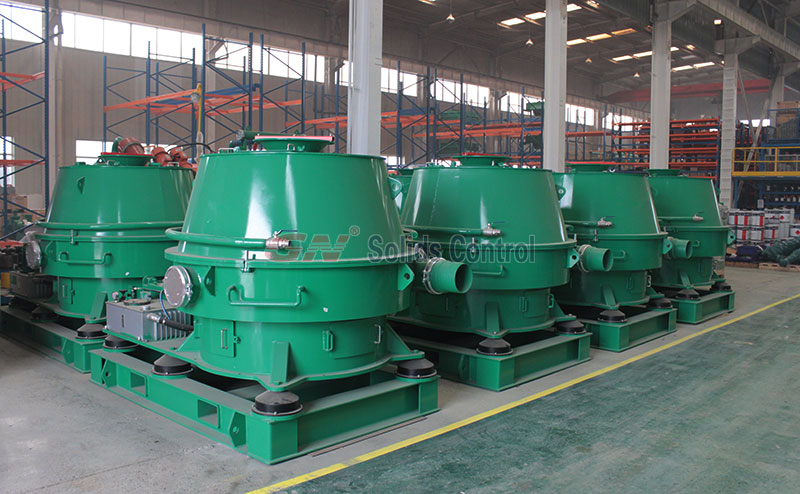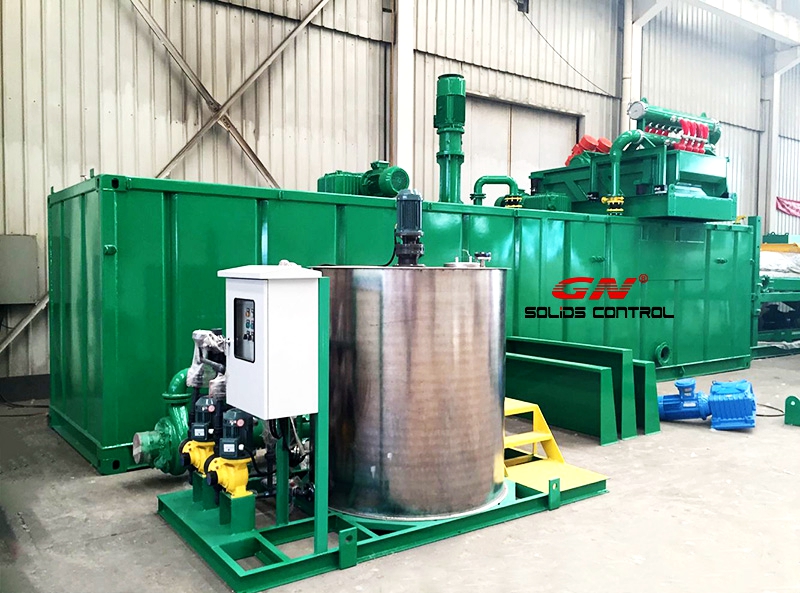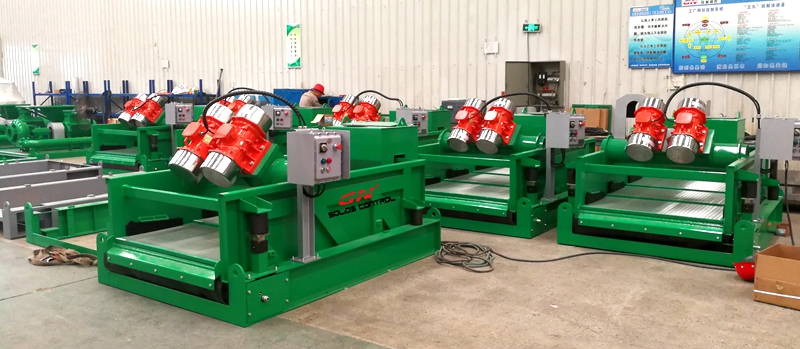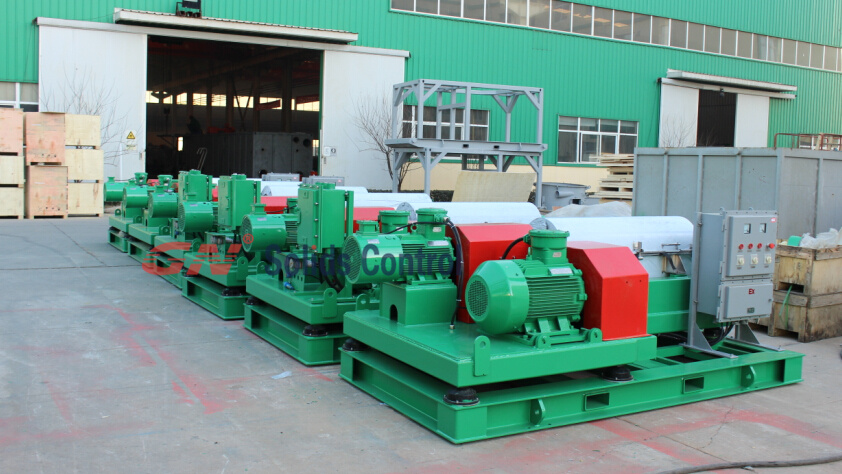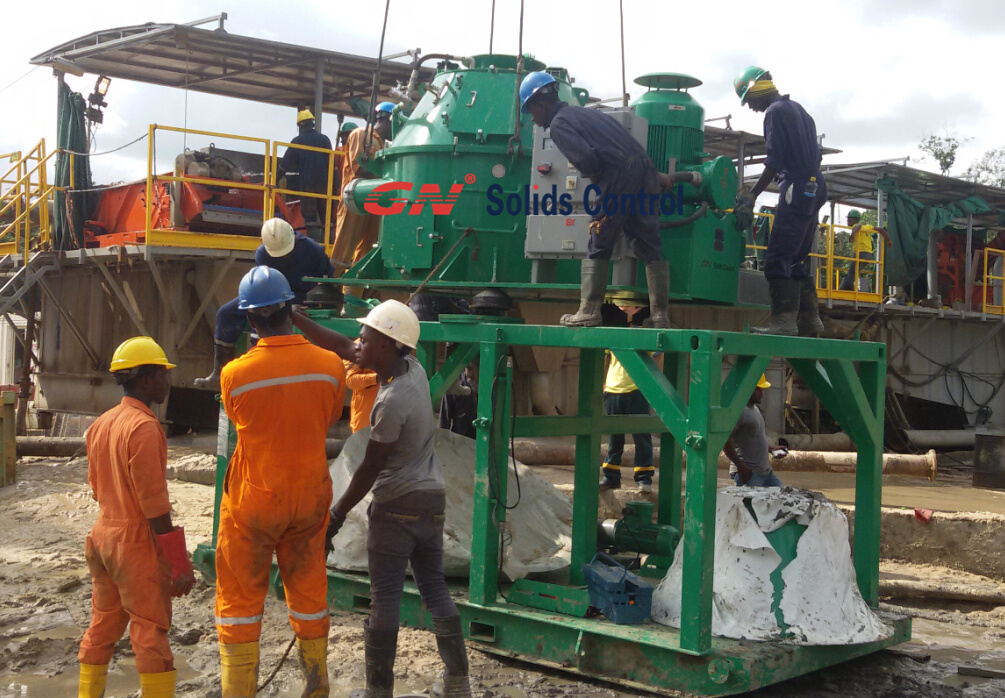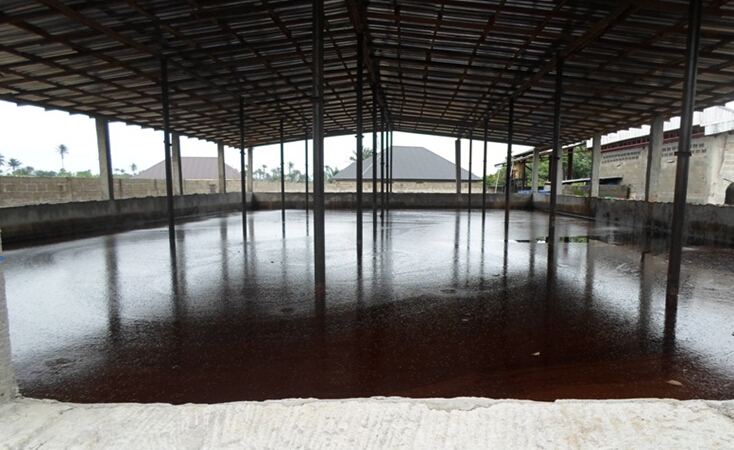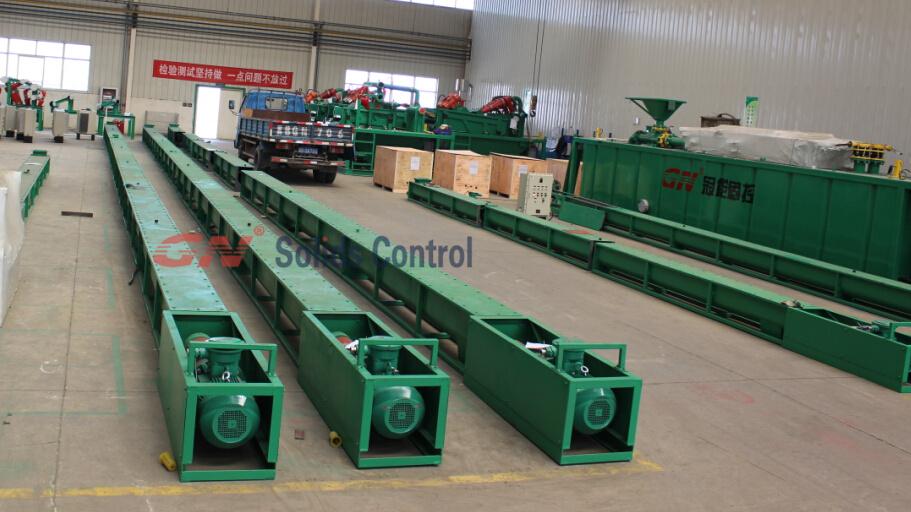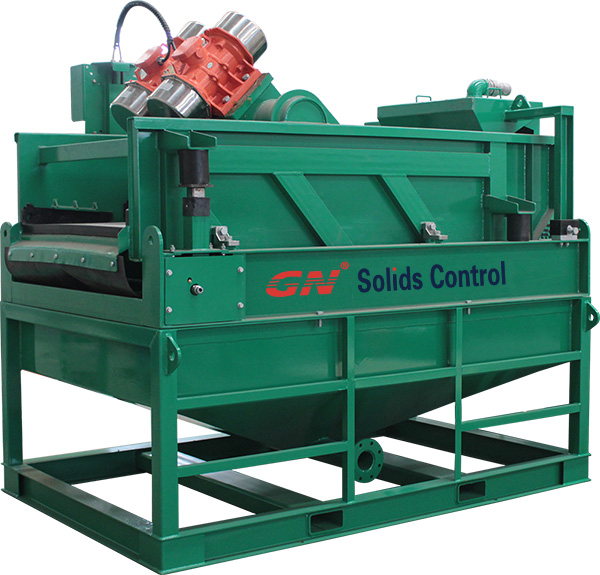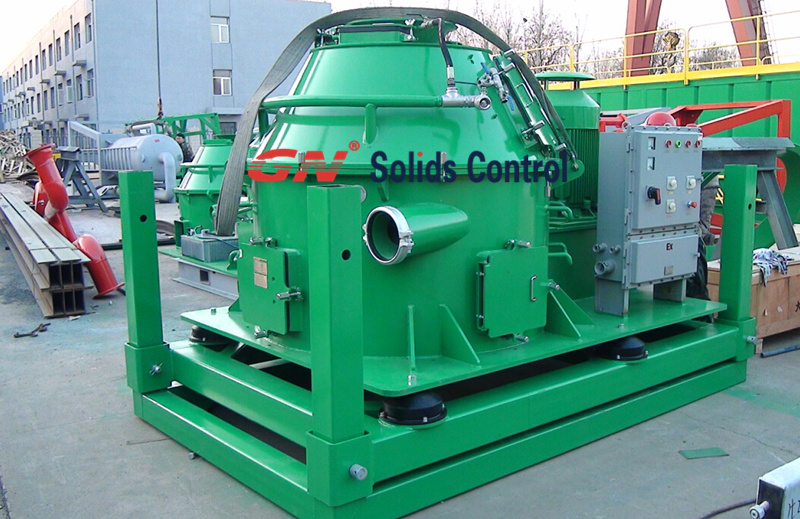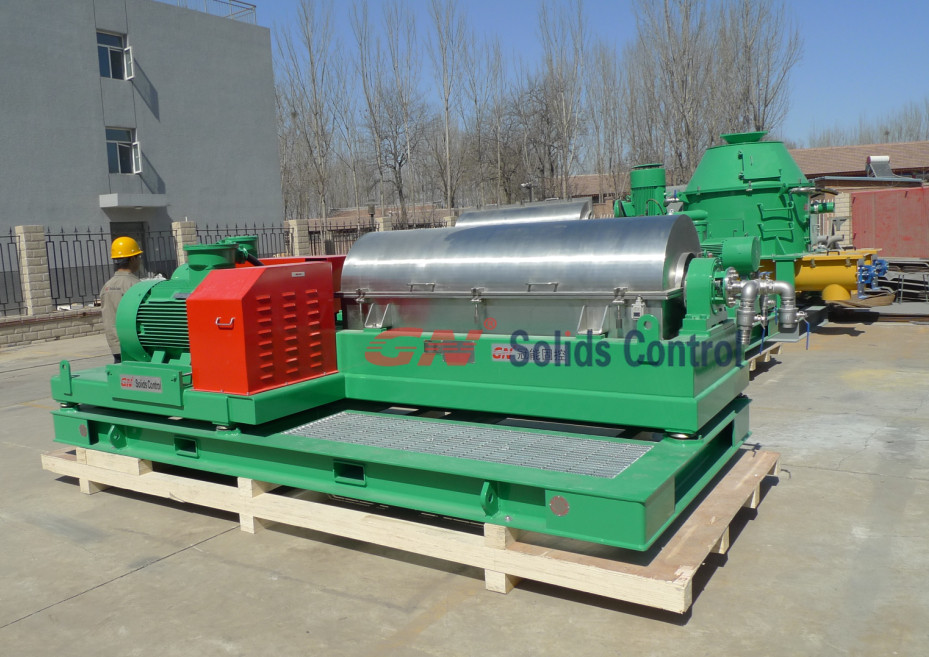There are usually two options for selecting a solid-liquid separation device.
(1) Plate and frame sludge dewatering machine:
The plate and frame filter press is extruded through the plate frame, so that the water in the sludge is discharged through the filter cloth to achieve the purpose of dehydration. It is mainly composed of concave man filter plate, frame, automatic-pneumatic closed system measuring plate suspension system, filter plate vibration system, air compression device, filter cloth high-pressure flushing device and fuselage side photoelectric protection device. Advantages: low price, good at dehydration of inorganic sludge, low moisture content of mud cake.
Plate and frame sludge dewatering machine
Disadvantages: easy to block, need to use high pressure pump, not suitable for dewatering of oily sludge, it is difficult to achieve continuous automatic operation.
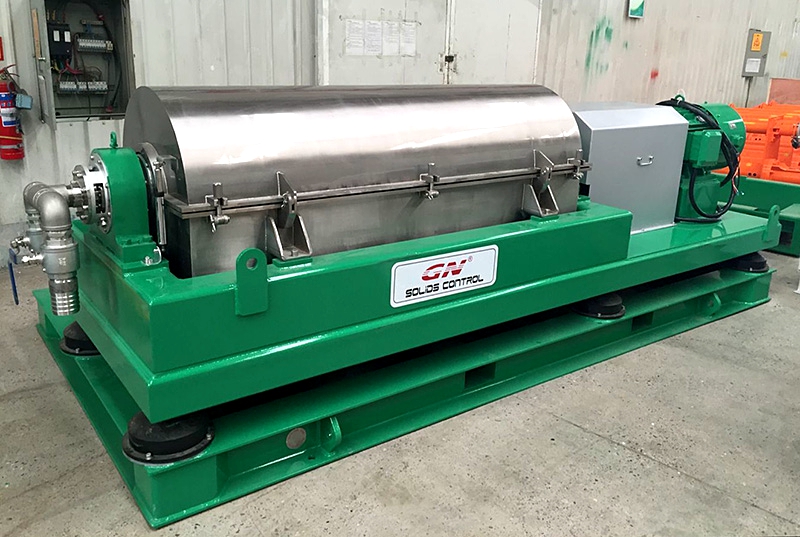
When selecting equipment, you should consider the following aspects:
1 The requirement for the solid content of the mud cake. Compared with other types of dewatering machines, the general plate and frame filter press has the highest solid content rate of up to 35%. If considering the factors of reducing sludge accumulation, the plate and frame filter press should be the preferred solution.
2 frame material.
3 filter plate and filter cloth material. Corrosion resistance is required, and the filter cloth must have a certain tensile strength.
4 How the filter plate moves. The requirements can be fully or semi-automatically completed by hydraulic-pneumatic devices to reduce the labor intensity of the operator.
5 filter cloth oscillating device, so that the filter cake is easy to fall off. Compared with other types of dewatering machines, the biggest disadvantage of plate and frame filter presses is the large footprint. At the same time, due to the intermittent operation of the plate and frame filter press, the efficiency is low, the operating environment is poor, and there is secondary pollution. The domestic large-scale sewage treatment plant has rarely been adopted.
(2) Horizontal screw sedimentation centrifuge:
The horizontal screw sedimentation mud centrifuge is mainly composed of a transfer and a screw conveyor with a hollow shaft. After the sludge is sent into the drum by the hollow shaft, the centrifugal force generated by the high-speed rotation is immediately turned into the hub cavity. The sludge particles have a large specific gravity, and thus the centrifugal force is also large, and the crucible is attached to the inner wall of the rotating hub to form a solid layer; the water density is small, the centrifugal force is also small, and only a liquid layer is generated inside the solid layer. The sludge of the solid layer is transported to the cone end of the transfer under the slow push of the screw conveyor, and is continuously discharged through the outlet around the transfer. The liquid is discharged from the overflow to the transfer, and is collected and discharged to the centrifuge.
Horizontal screw sedimentation centrifuge/Decanter centrifuge
Advantages: Large processing capacity.
Disadvantages: high power consumption, not suitable for solid-liquid separation close to specific gravity.
The most critical component of the horizontal screw settlement drilling fluid centrifuge is the hub. The larger the diameter of the hub, the greater the dewatering capacity. The longer the reloading length, the higher the solid content of the sludge. During use, the revolving speed is an important control parameter, which controls the rotation speed of the rotating hub, so that it can obtain high solid content and reduce energy consumption. It is the key to the operation of the centrifugal dewatering machine. A low speed centrifugal dewatering machine is often used. When selecting the centrifugal dewatering machine, the outer edge of the runner or the screw is extremely easy to wear, and the material has special requirements. The spiral outer edge of the new centrifugal dewatering machine is mostly made up of assembly blocks for replacement.
The centrifugal dewatering machine has the disadvantages of high noise, high energy consumption and low processing capacity. There are only a handful of domestic manufacturers that can produce centrifuges suitable for high specific gravity mud separation.
The horizontal screw-type sedimentation centrifuge produced by Hebei GN Solid Control Co., Ltd. has a mud cake solid content of more than 30%, and the operation is carried out in a completely enclosed environment. There is no sludge and sewage around the dehydrator. The absence of a foul odor can greatly improve the working environment of the operating personnel and is therefore favored by the industry.
The specific equipment selection should be based on the material to be separated and the separation effect to be achieved.
More question,welcome contact GN solids control

